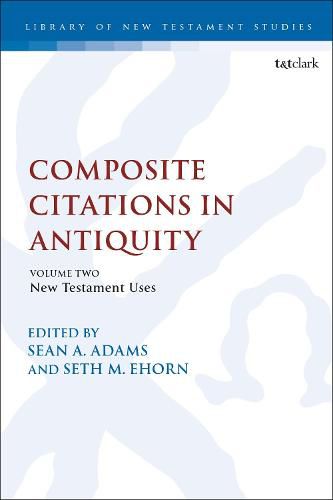Readings Newsletter
Become a Readings Member to make your shopping experience even easier.
Sign in or sign up for free!
You’re not far away from qualifying for FREE standard shipping within Australia
You’ve qualified for FREE standard shipping within Australia
The cart is loading…






This is the second of two volumes that investigate the phenomenon of
composite citations. The first collection of essays evaluated the use of
composite citations in Early Jewish, Graeco-Roman, and Early Christian
authors. This volume builds on the findings of the first and provides a fresh investigation of all the composite citations by New Testament authors.
The following topics are covered: (1) the question of whether the quoting author created the composite text or found it already constructed as such; (2) the question of the rhetorical and/or literary impact of the quotation in its present textual location, as opposed to simply unpacking how the author appears to be interpreting the source text; and (3) the question of whether the intended audiences would have recognized and ‘reverse engineered’ the composite citation in question and as a result engaged with the original context of each of the component parts.
$9.00 standard shipping within Australia
FREE standard shipping within Australia for orders over $100.00
Express & International shipping calculated at checkout
This is the second of two volumes that investigate the phenomenon of
composite citations. The first collection of essays evaluated the use of
composite citations in Early Jewish, Graeco-Roman, and Early Christian
authors. This volume builds on the findings of the first and provides a fresh investigation of all the composite citations by New Testament authors.
The following topics are covered: (1) the question of whether the quoting author created the composite text or found it already constructed as such; (2) the question of the rhetorical and/or literary impact of the quotation in its present textual location, as opposed to simply unpacking how the author appears to be interpreting the source text; and (3) the question of whether the intended audiences would have recognized and ‘reverse engineered’ the composite citation in question and as a result engaged with the original context of each of the component parts.